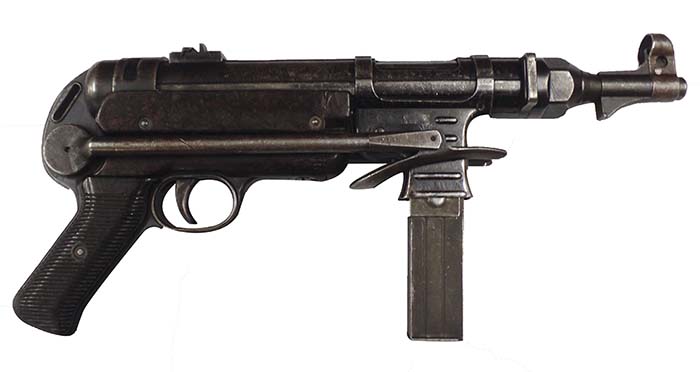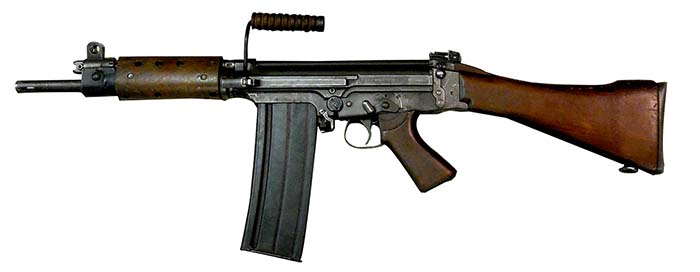By Kyle Shea
The Dirty Dozen & The Wild Geese
“The Dirty Dozen” hit theaters in 1967 and was a big success. It was well liked by audiences, though there was some criticism for the violence, which was pretty rough for the time. It stars Lee Marvin, a World War II Veteran who was once awarded the Purple Heart. In fact, the film is full of WWII veteran actors, including Robert Ryan, Clint Walker, Telly Savalas, and Charles Bronson of the “Death Wish” series. It is the story of a group of criminals in the US Army being recruited to take out a group of top German Officers, hoping to make the D-Day Landings easier in the process. It is actually based on the novel of the same name, written by E. M. Nathanson, who took inspiration from the Filthy Thirteen, a real fighting unit from WWII. Unlike “The Dirty Dozen” from the film and book, Filthy Thirteen got their name because they wouldn’t shave or bath for weeks, and were not a collection of criminals who were promised a better sentence.
“The Dirty Dozen” is a classic guy movie. In the movie “Sleepless in Seattle,” after a woman has stopped crying over a movie she had just watched, the two men in the room suddenly recall the death of a character in “The Dirty Dozen” and start tearing up, much to the woman’s enjoyment. In 1985, a made for TV movie aired staring some of the original cast, called “The Dirty Dozen: Next Mission.” It was soon followed by “Dirty Dozen: The Deadly Mission” and “Dirty Dozen: The Fatal Mission.” The movies aren’t great and are obviously made for TV, with parts fading to black at certain points for the commercials. The last two movies see the return of Telly Savalas, though he plays an entirely different character from the one he played in the first movie.

In the first of the sequels, “The Next Mission,” Lee Marvin’s character, Maj. John Reisman, recruits a new Dirty Dozen to infiltrate behind enemy lines disguised as Wehrmacht soldiers. They are armed with the MP40 submachine guns, one of the finest guns of the war. Maj. Reisman is actually given a special gun, an MP40 with a shorter barrel than the others. In reality, no such gun existed during WWII and is entirely movie magic made by the machine shop at Bapty, Ltd in London, England.
The MP40 was one of Germany’s best and most prolific weapons during WWII, with over one million guns made. It was light, easy to shoot, and carried a 32 round magazine. The MP 38, its precursor, was actually slightly more expensive because of the milled receiver (MP40s are stamped) but was not as well received. Both were actually designed by the same men, Berthold Geipel and Henrich Vollmer. Much of the action it saw was on the Eastern Front in Russia, with some sent to North Africa where the allies got their hands on them. The MP40 was such a great gun that it was used well after the war by Norwegian tank crews and the armies of the Netherlands, Yugoslavia, and Austria. The Soviet Union even took the countless MP40s they captured in their war with Germany and sent them to their satellite states and to numerous rebel groups around the world, including the North Vietnamese.
As mentioned before, the “Dirty Dozen” sequels are not that great. “The Next Mission” does have an interesting idea in that the dozen are being sent to assassinate a top SS Officer who is planning to kill Adolf Hitler, because the Allies are worried that someone more dangerous and “much more competent” will take his place. The plot of the “Deadly Mission” is to rescue a group of scientists from the Nazis and destroy a dangerous weapon of mass destruction. The plot of “The Fatal Mission” is to capture a group of German intellectuals who are trying to start a Fourth Reich in the Middle East. If you enjoy these movies, by all means, enjoy, but they are nothing compared to the original “The Dirty Dozen” classic.

During the cold war, the Ak-47 was found all over the world as the weapon of choice for the USSR and its Communist allies, as well as countless rebel and terrorist groups. To counter this, the US had the M16 assault rifle, but many of its allies depended on another weapon, one that had come out of Belgium. Created by the company FN Herstal, The FN FAL (or Fusil Automatique Leger, French for Light Automatic Rifle) was at one time the primary assault rifle for over ninety countries, including Israel and most of the NATO countries.
Designed by Dieudonne Saive and Ernest Vervier, the FN FAL is an excellent rifle that has stood its ground against the arguably more popular AK-47. Its usual caliber is 7.62x51mm NATO although the British tried it in .280, and has an effective range of 200 to 600 meters with open sights. It comes in many variants, including the L1A1, or SLR, which saw service in the UK and most of its Commonwealth Nations, including Canada, the first country to order the rifle in large numbers (The Commonwealth Nations used the “Inch Pattern” FALs while the others basically used the “Metric FALs”). It has been replaced in some of these countries by the SA80, the C7 Assault rifle, and the Steyr AUG, but is still used in a few areas of Law enforcement and is popular with civilians.
The FN FAL saw service in many conflicts, including the Vietnam War, the Bay of Pigs Invasion, and the Rhodesian Bush War. It was used on both sides of the Falkland War and saw service in the Israeli army throughout the Suez Crisis, the Six Day War, and the Yom Kippur War. It is even being used today with the Syrian and Libyan Civil Wars, and the Mexican Drug War.
Though it is a great rifle, the FN FAL has a few problems. One problem is the weight. It is heavier than the AK-47 by two pounds or more, and that is without the ammo, which is also heavier. The Israeli rifles tended to jam because of the sand that got into the gun. It also has a strong recoil that feels like somebody is punching you in the shoulder. Perhaps the weirdest problem is the firepower itself. The bullet tended to go through walls and enemy combatants alike.
In the film “The Wild Geese,” the FN FAL is one of the most common guns used. One of them is the FN FAL with a shortened barrel that was carried by Tosh Donaldson, portrayed by real life professional soldier Ian Yule, who served with Colonel “Mad Mike” Hoare in the Commando unit which inspired “The Wild Geese” and all over the world. He was also a stunt man on the movie Ben-Hur. In truth, this Shortened FAL is movie magic from Bapty, Ltd, for there was no FAL that had a shortened barrel at the time. The Bapty FAL is made from a British L2A1 rifle. There are a few that do have them in recent years, including the Armtech L1A1 SAS and DS Arms’ OS-58.
“The Wild Geese” is a good movie. It stars Richard Burton, Roger Moore, and Richard Harris as a group of mercenaries hired by a private mining company to rescue a political prisoner in Africa. It had a bit of a controversy because it was filmed in apartheid South Africa. Despite this, it did well in the United Kingdom and in other parts of the world, but did poorly in the USA for a number of reasons. The Wild Geese is also the name used by many of the Irish fighting units that fought for Spain and France during the sixteenth, seventeenth, and the eighteenth centuries. If you have time, look up the history of these units and, of course, the movie “The Wild Geese.”
| This article first appeared in Small Arms Review V21N1 (January 2017) |












